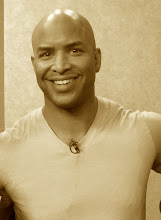Enter Your Name and Email Address below for Instant Access!
Monday, August 20, 2012
8 Ways to Prevent Muscle Soreness
Are you super sore after a hard workout? Delayed-onset muscle soreness (DOMS) can make you feel the burn while your muscles recover and rebuild. But, if you take the necessary steps after your workout, you can go all out without paying for it later. Here are 8 easy ways to ease postworkout pain.
1) Stretch. Stretching is your first line of defense after a good workout. "When you train, you contract the muscles, and the muscle fibers get shorter. Stretching the muscles allows them to lengthen which promotes mobility, and can lead to a more thorough recovery. While every fitness experts has their on theory on this strategy—one Australian study claimed that stretching had no impact on muscle soreness—it certainly won't hurt, especially if your flexibility is limited.
2)Nourish the body for rapid recovery. In a study on "nutrient timing," researchers found that a postworkout drink with between a 3:1 to 5:1 carb-to-protein ratio reduced muscle damage and improved recovery times[3]. A vigorous workout zaps blood sugar, as well as the glycogen stored in your muscles. Replenishing that supply within an hour of finishing your workout is your body's top priority. P90X® Results and Recovery Formula® which can be found on my website in the store at www.JohnHallStudios.com But in a pinch, a glass of chocolate milk will suffice. When the sugar from the drink is consumed the sugar increases your insulin levels which allow your red blood cells to open and transport the protein and sugars into your muscles to restore that supply, the protein piggybacks to jump-start the recovery process."
3)
Ice or Ice Bath. Immediately after a tough workout, icing your muscles reduces inflammation. "Inflammation is one of nature's defense mechanisms, it protects muscles that it perceives to be injured, which can immobilize you. When you keep inflammation down, that area is free to keep moving, and movement promotes healing.
4)Change your diet. "When your muscles are sore, inflammation is a major factor. To combat inflammation, add foods that are rich in omega-3s—such as salmon, free-range meat, flax, avocado, and walnuts to your diet.
The natural anti-inflammatory properties of these foods can help reduce the soreness after overexertion. Amino acid supplements can also be used to help with muscle recovery after a high-intensity workout.
5)Massage your sore spots. One type of massage that's gaining popularity is myofascial release, which targets the connective tissue covering the muscles.
You can hit these areas yourself using a foam roller—put the roller on the floor, use your body weight to apply pressure, and roll to the sore areas and hold in any sensitive are for about 30 seconds. For a more detailed tutorial on foam rolling, check out the Beachbody Tai Cheng® program located in my store at www.JohnHallStudios.com
6)Get heated. Heat increases circulation especially wet heat. Focused heat in a jacuzzi, where you can hit areas like joints that don't normally get a lot of circulation. Just don't jump in the hot tub immediately after a workout, because the heat will increase inflammation, and the jets can pound your already-damaged muscles.
7)Move it. Don't be tempted to plant yourself on the couch because it will only result in more muscle soreness and stiffness. Circulation promotes healing, so it helps to get your heart pumping—just don't overdo it. "Active recovery" is low-intensity exercise that gets your blood flowing without taxing your muscles. What qualifies as low-intensity? A gentle yoga class, going for a walk or a easy bike ride are good options.
8)Pop a painkiller—if you must. Nonsteroidal anti-inflammatory drugs like ibuprofen can relieve pain, but many experts aren't sure if they're worth the risk. There are some cautions that NSAIDs can cause nasty side effects and accelerate muscle breakdown. "The only time they might help is if you're in so much pain that you can't do low-level exercise. In that case, meds might help, but be careful not to overdo it—because if you're not feeling pain, you may push too hard and cause an injury.
To Your Health,
John
Subscribe to:
Posts (Atom)
















